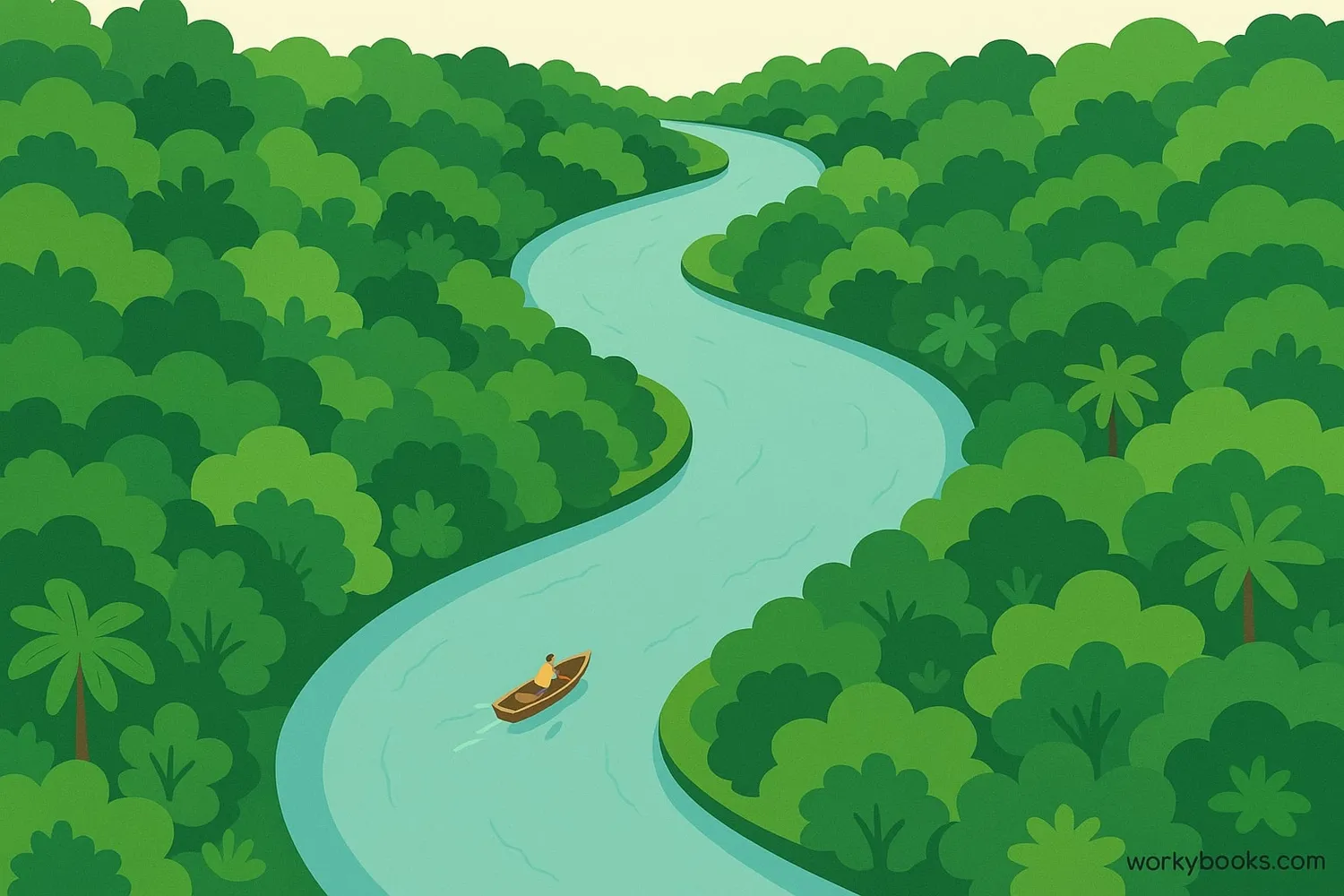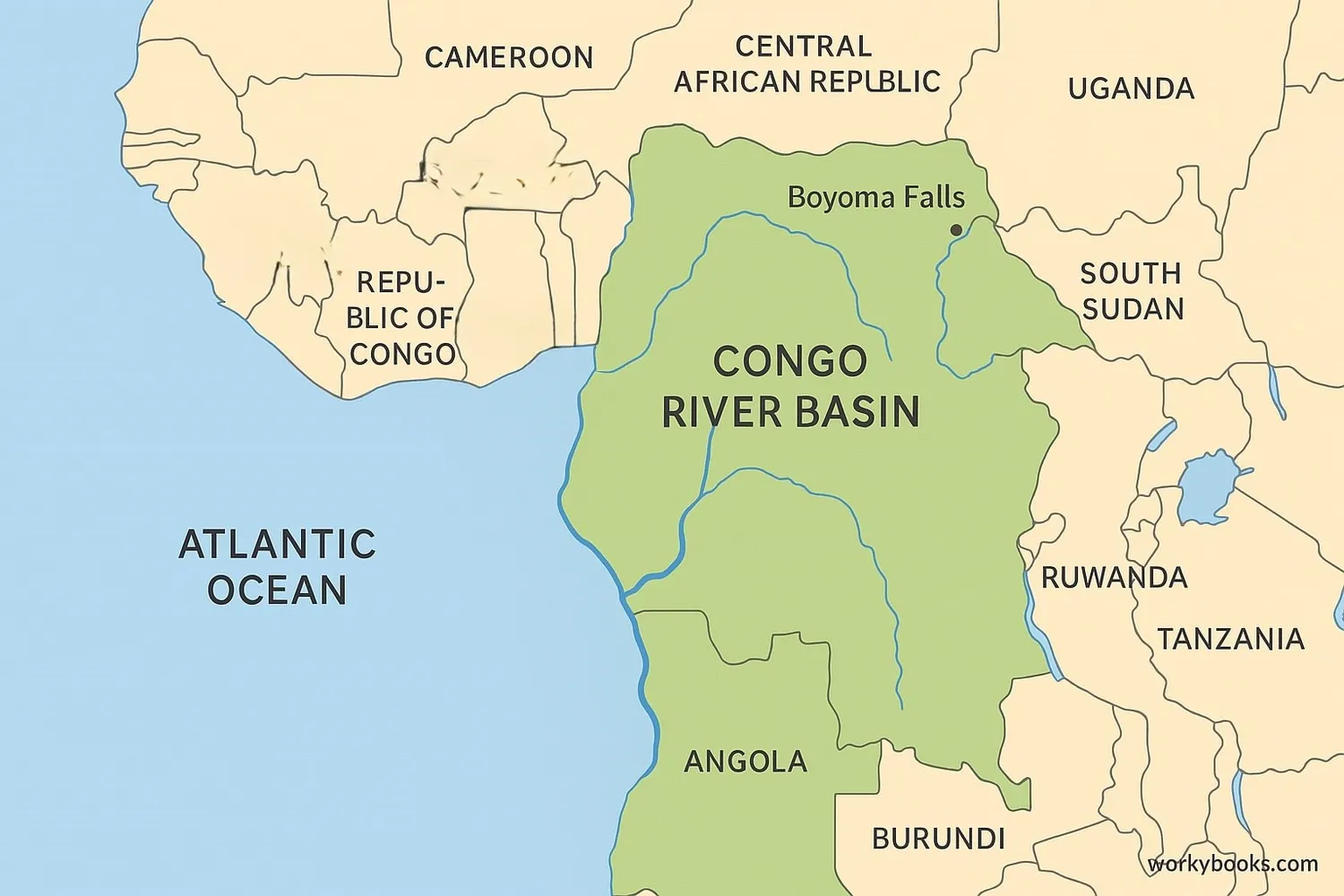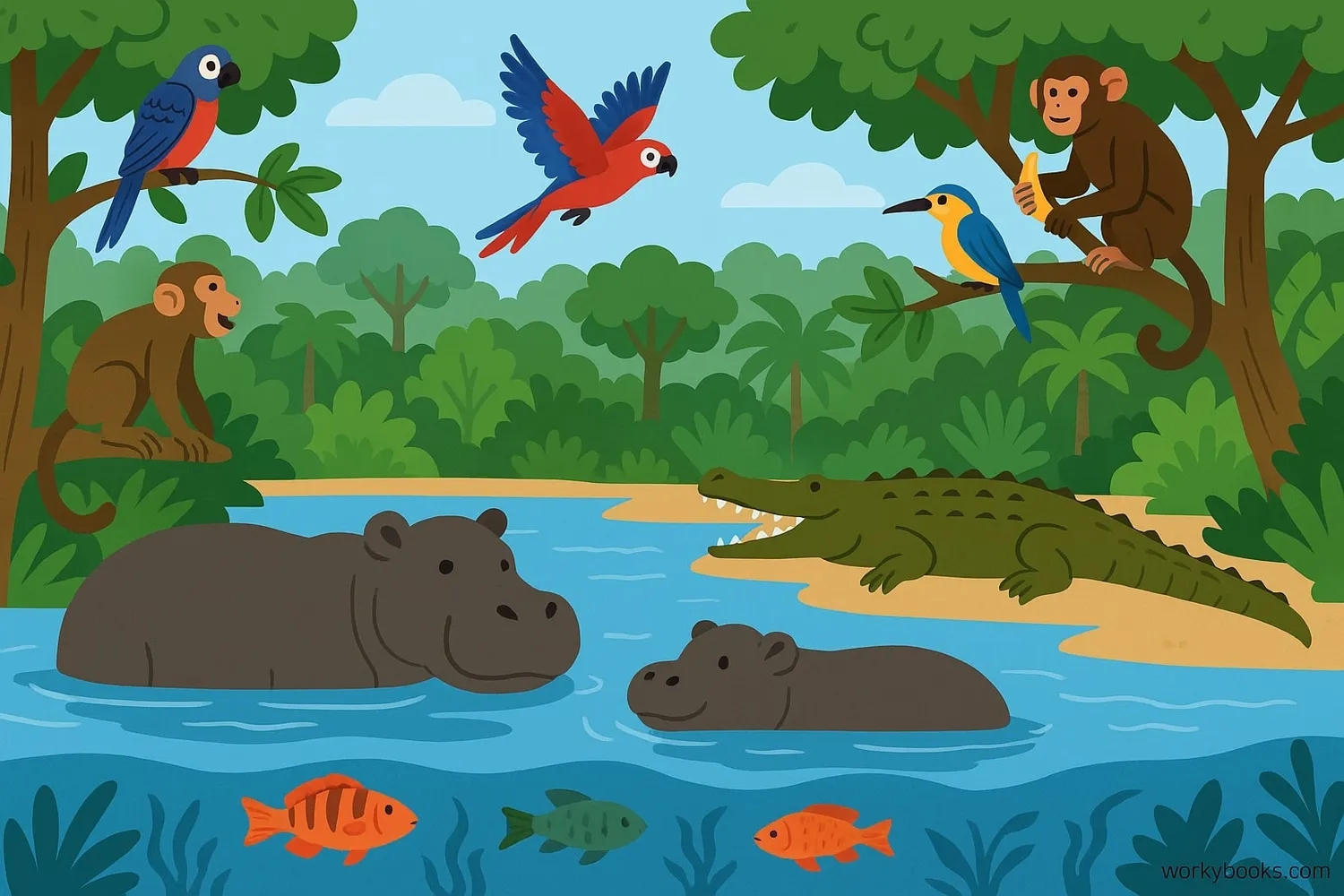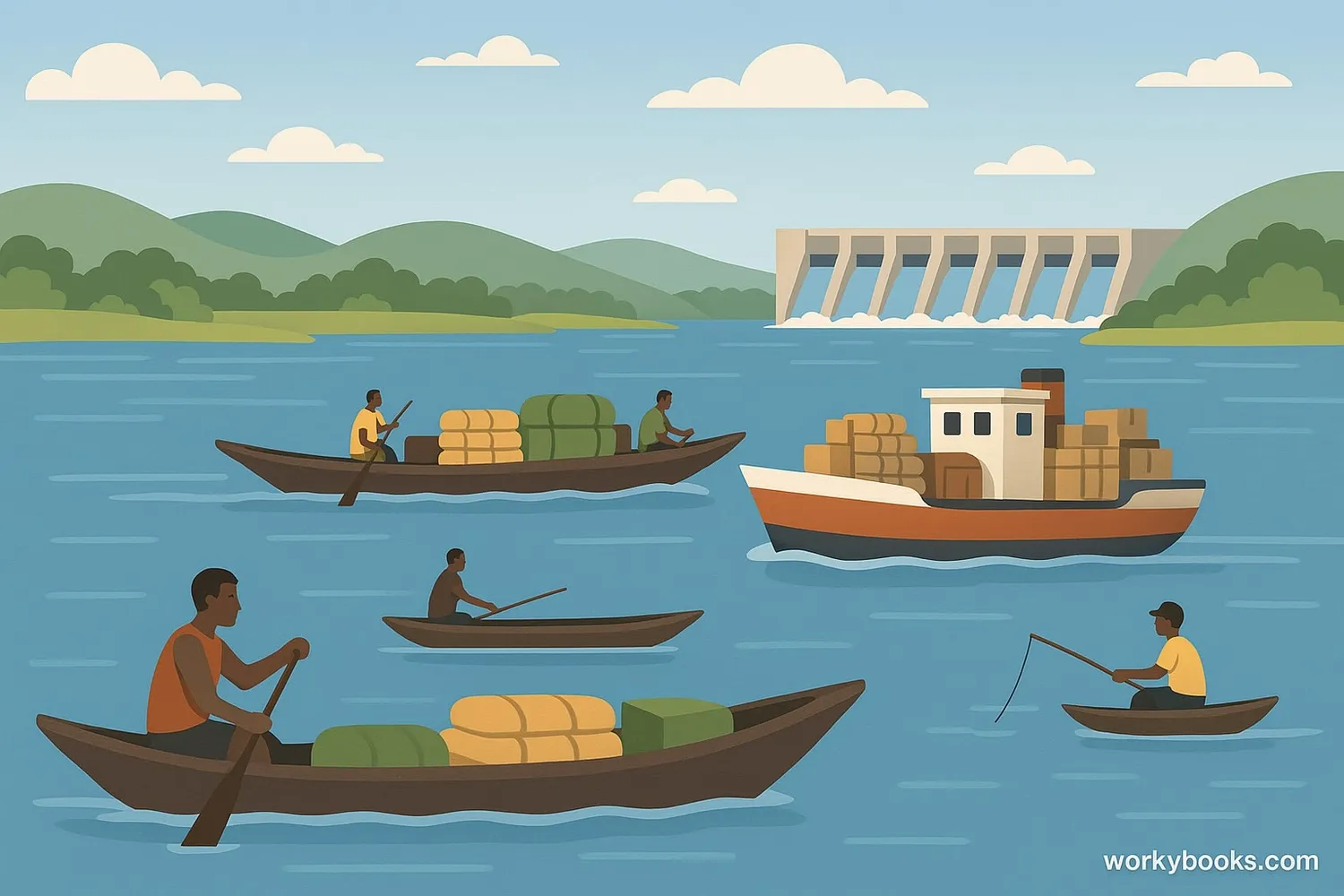The Congo River - Definition, Examples, Quiz, FAQ, Trivia
Discover the deepest river in the world and its amazing journey through Africa
What is the Congo River?

The Congo River is the deepest river in the world and the second-longest river in Africa. It flows through the heart of the continent, creating a vital lifeline for people, animals, and plants.
Here are some key facts about this amazing river:
• It's about 2,900 miles (4,700 km) long - that's longer than the distance from New York to California!
• At its deepest point, it plunges over 720 feet (220 meters) deep - taller than a 60-story building!
• The river flows through six countries: Zambia, Angola, Democratic Republic of Congo, Republic of Congo, Central African Republic, and Cameroon.
River Fact!
The Congo River carries more water than any other river except the Amazon - enough to fill over 1 million Olympic swimming pools every hour!
Geography & Flow

The Congo River has an incredible journey from its source to the ocean:
Source
Begins in the highlands of Zambia as the Chambeshi River
Boyoma Falls
Seven cataracts where the river drops 200 feet over 60 miles
Great Bend
Makes a huge U-shaped curve through the rainforest
Stanley Pool
A wide lake-like section near Kinshasa and Brazzaville
Mouth
Empties into the Atlantic Ocean through a deep canyon
The Congo River Basin is enormous - about 1.3 million square miles (3.7 million km²), which is almost as big as India! This basin collects rainwater from across central Africa and channels it toward the Atlantic Ocean.
Rapids Fact!
The river has over 4,000 rapids along its course, making navigation difficult in many areas. The most famous are the Livingstone Falls near the river's mouth.
Wildlife & Rainforest

The Congo River flows through the world's second-largest rainforest, creating an incredible habitat for thousands of species:
River Giants
Home to the massive Goliath tigerfish and giant catfish
Iconic Mammals
Hippos, crocodiles, and rare aquatic antelopes
Rainforest Biodiversity
Gorillas, chimpanzees, forest elephants, and colorful birds
The Congo Rainforest is often called the "second lung of the Earth" because it absorbs huge amounts of carbon dioxide and produces oxygen. This incredible ecosystem:
• Covers 500 million acres across six countries
• Contains over 10,000 plant species
• Provides habitat for 1,000 bird species and 400 mammal species
• Is home to indigenous groups like the Mbuti people
Human Importance

The Congo River has been vital to human life for thousands of years:
Transportation
Main transport route for people and goods across Central Africa
Hydroelectric Power
Potential to power all of Africa with dams like Inga Falls
Food Source
Provides fish for millions of people living along its banks
The river has played an important role in history:
• Early exploration by David Livingstone and Henry Morton Stanley in the 19th century
• Vital trade route during colonial times
• Today, it remains the economic heart of Central Africa
The Congo River's potential for hydroelectric power is enormous. The Inga Dams could produce enough electricity to power all of sub-Saharan Africa if fully developed!
Congo River Quiz
Test your knowledge about the Congo River with this fun quiz! Answer all 5 questions to see how much you've learned.
Frequently Asked Questions
Here are answers to some common questions about the Congo River:
Fun Congo River Trivia
Discover some amazing facts about the Congo River:
Water Flow
The Congo River discharges 1.25 million cubic feet of water per second into the Atlantic Ocean - that's 13 times more water than the Nile River!
Exploration History
Henry Morton Stanley navigated the entire length of the Congo River in the 1870s. His journey took 999 days and he lost over half his crew to disease and accidents.
Unique Geography
The Congo is the only major river to cross the equator twice on its journey to the ocean. This creates two rainy seasons each year instead of one.
Rainforest Importance
The Congo rainforest stores approximately 8% of the world's forest-based carbon. Protecting it is crucial for fighting climate change.


